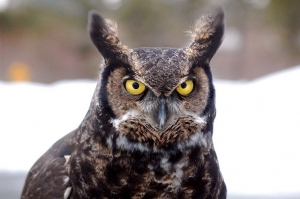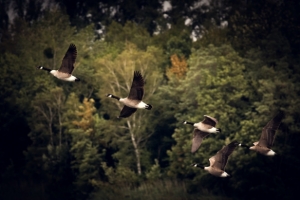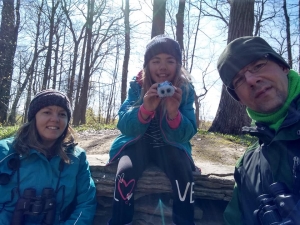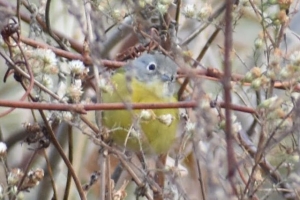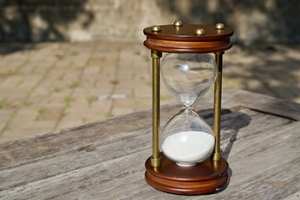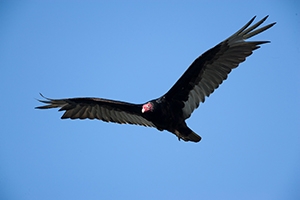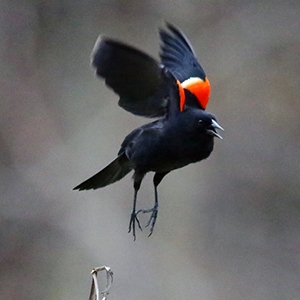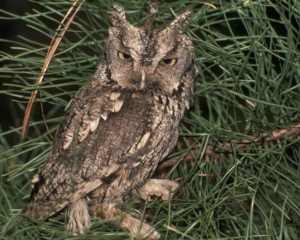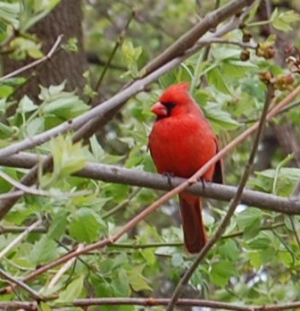
Midnight Owls
In the heart of the city, especially in the midst of one of Milwaukee’s classic, bitterly cold winters, it's easy to miss the endless bird songs we took for granted throughout the warmer seasons. But in the absence of those loud, lovely summer songs, we are able to hear the wintery mating calls of area owls that can be difficult to find by sight. Wisconsin’s four most common non-migratory owls are the Northern Saw-whet, Eastern Screech, Barred, and Great Horned Owl.
Nocturnal Migrators
When we think of fall, we begin to dream of pumpkins, apple orchards, and pumpkin spice lattes. While these are exciting things to look forward to, fall also brings on an exciting event that you can witness from your backyard's comfort. Fall migration in Wisconsin can begin as early as August and will continue through December. The first birds to kick off migration are swallows and purple martins. Birds move to where there are more resources, such as food and nesting locations. Insect availability drops as temperatures cool, and other food sources become scarce as the plant life decays.
Backyard Birding Blitz: Fall Migration
While springtime has long ago passed and with social distancing and mask wearing highly recommended, the Urban Ecology Center is excited to announce our first ever Fall Backyard Birding Blitz on Saturday, September 12th! As the birds start their journey back down south to warmer places for the winter, that means that they will be stopping by in Milwaukee and in cities and places from around the country. Come join us in observing and documenting the beautiful birds as they migrate south. Similar to the Green Birding Challenge in spring, some of the rules will sound familiar – you can choose between one of three challenges where you will try to record as many different species of birds as possible without using fossil fuels. The goal of this event will be the same: to connect people to the wonders of our local birds, and rather than gathering in one place, we are going to explore our own backyards and neighborhoods in a socially distant way.
The Natural Bird GPS
I have always been interested in the unique physiology and behavior of our local avian friends; however, my internship this summer with the UEC has further sparked my interest in their migratory patterns. As one of the Community Science and Research Interns, I had the unique opportunity to travel to Door County for the annual Bioblitz. This event consists of several passionate scientists from around the state meeting and conducting biological surveys for an area of interest- basically a bunch of nerds doing what they love. As a part of this, I had the chance to participate in bird banding.
Nashvilles in November?
You may have noticed that bird walks comprise the majority of community science opportunities at the Urban Ecology Center this time of year. And while our species counts may look closer to the temperature these days (if we’re lucky), there are still discoveries waiting to be made. Last week both our Menomonee Valley and Riverside Park bird walks found something we’ve never found before: a Nashville warbler in November!
Mother Nature and Father Time
Mother Nature and Father Time. We’ve known they were our family for at least 3,000 years when they first entered into Ancient Greek lore. I prefer to call them our parents and leave out the gender, but let’s focus on their relationship.
It’s prudent to consider time in our daily lives – learn from the past, live in the present, prepare for the future. Nature excels at all three of these things.
Creepy Creature: Turkey Vulture (Cathartes aura)
On an early morning bird walk last year, we smelled our find before we saw her. The smell of necrosis mixed with day-old vomit lingered on the light breeze. We scoured the nearby terrain trying to find the mysterious decaying matter hidden amongst the leaf litter only to remain perplexed. And then we saw her. Perched on a tree branch, just 10 feet from our heads, sat the pungent perpetrator.
Red Wings and Early Spring
For those of you who may not know, we have an organization-wide phenology competition every year to document the first of year (FoY) Red-winged Blackbird, Eastern Chipmunk, Mourning Cloak, and Butler's Gartersnake. The documentation of these four species typically signifies the arrival of spring and the dismissal of winter. This year's unseasonal warm weather, however, has a resulted in an uncomfortably early kickoff.
Native Animal of the Month: Eastern Screech Owl
Last fall at Riverside Park, the research and community science department was hosting the Wisconsin DNR’s bat biologists for an evening of bat mist netting, when a gregarious little screech owl paid us a visit. As DNR biologist Paul White held the large group of participants enraptured with a live bat, a persistent whinny in the distance distracted those of us at the back of the group.
Green Birding Challenge Recap
Thank you to everyone who helped make the 5th Annual Green Birding Challenge a success! 19 teams, comprised of both experienced and fledgling birders, participated in this year's challenge and observed over 100 distinct bird species in a fossil fuel free search around the city. Their efforts inspried more than 150 generous donors to pledge $8,000 for the Center's Citzien Science program. Wow! Read on for more fun facts and photos from the day's birding adventure!
Copyright © 2023 The Urban Ecology Center

